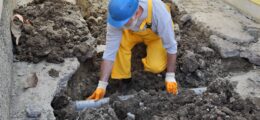Inflation Remains Top Problem for Main Street
Inflation Remains Top Problem for Main Street
July 9, 2024
Inflation Remains Top Problem for Main Street
- Seasonally adjusted, a net 22% plan to raise compensation in the next three months, up four points from May.
- A net negative 2% (seasonally adjusted) of owners viewed current inventory stocks as “too low” in June, up six points from May’s lowest reading since October 1981.
- A net negative 2% (seasonally adjusted) plan inventory investment in the coming months, up four points from May.
- Fifty-two percent reported capital outlays in the last six months, down six points from May and the lowest reading since August 2022.
- Four percent of owners reported that all their borrowing needs were not satisfied, up one point from May and the highest reading since August 2022.
Get to know NFIB
NFIB is a member-driven organization advocating on behalf of small and independent businesses nationwide.
Related Articles

April 23, 2025
NFIB Asks for Small Business Consideration in Future WOTUS Rule…
NFIB sent a comment letter to the EPA and Army providing suggestions for ho…
Read More


April 18, 2025
Illinois Ranks 46th out of 50 States for Economic Competitivene…
Illinois climbed two places, from 48th to 46th, in the rankings but continu…
Read More


April 16, 2025
New Polling Shows Strong Support for the 20% Small Business Ded…
As Congress debates tax policy, new polling shows bipartisan American suppo…
Read More


April 16, 2025
Health Care: Small Business Pays More, Gets Less
NFIB member Marcie Strouse testified before Congress highlighting how healt…
Read More







